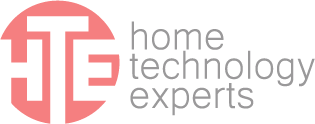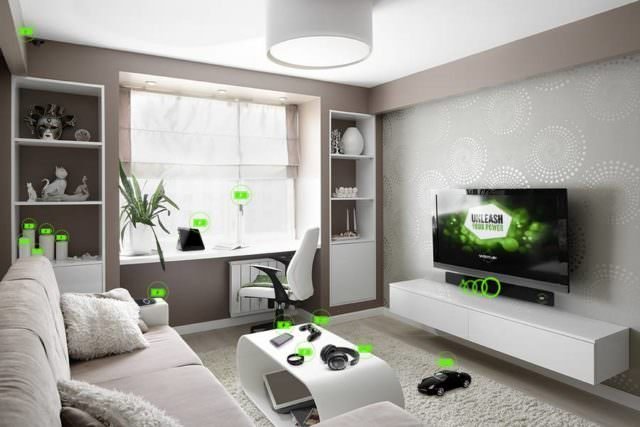CES 2017 RECAP
As expected artificial intelligence was the star of CES. While there were physical robots on the show floor the most practical applications were with virtual assistants and connected cars. Of course televisions were on display, it wouldn’t be CES if it wasn’t. Products on display ranged from as a robotic lawnmower to Wi-Fi connected hairbrush.
Virtual Assistants
Alexa, the voice recognition software that comes standard on Amazon’s tech products showed up in Ford cars this week. This surprising move expands Alexa’s profile positioning the assistant to be on par with rivals Google Assistant and Siri.
Amazon Echo, the device that made Alexa a house hold name introduced a slew of new partners and accompanying skills. The list includes both LG and Whirlpool appliances to Dish Hopper DVR. Other manufacturers such as Klipsch includes a built in speaker with a spot for an Alexa dot on top.
We were really excited to see what Google Home was going to reveal especially since it has so much catching up to do. While they did announce a few partners we were really expecting much more. In fairness Google Home is still in its infant stages and further along than Amazon Echo was this time last year.
Electric and Connected Cars
This year CES was filled with a ton of Electric self-driving cars. While we're not sure if automakers see electric cars as the future or as the only way to show off their vehicle in a convention center (you can't run fuel vehicles indoors because of CO2) it is clear that the race for the best smart car is on and everybody from Google to AT&T is in it. Since there were so many types of smart cars we broke them out by category.
ELECTRIC
Ford announced they will have a fully electric SUV hit the market in 2020; until now the largest fully electric vehicle was a crossover. They also announced that they're working on Mustang and pickup hybrids. Chrysler did one better unveiling the Portal which is the world's first fully electric minivan.
CONNECTED
Nissan and BMW showed off Microsoft's Cortana virtual assistant in their new cars while Chrysler teamed up with Google creating a new Android based infotainment system. The new format allows the carmaker to keep it's essential applications while adding Google features such as Maps and Google Assistant as well as third party Android apps such as Spotify and Pandora. Google Home (powered by Google Assistant) teamed up with Hyundai. Now drivers can simply tell the start speaker to autostart their car. Meanwhile, Ford opted to integrate Alexa.
SELF DRIVING
Toyota introduced "Yui" the virtual assistant they want you to think of as a person in their Concept-i self-driving vehicle. He even greats you when you touch the handle on the car door. The BMW, Intel and Mobileye team went the traditional route, allowing drivers to be impressed by the technology instead of bonding with it. They hope to have their self-driving car on the road by the end of 2017. Nvidia debuted its self-driving car, BB8 (yes, that's a Starwars nod). They are working with Audi and hope to have their collaboration on the road by 2020.
Hyundai introduced Ioniq, another self-driving car, at a price point much lower than their competitors, but what has everybody talking is their "Mobility Vision" concept. Their vision is to blur the line between car and smart home, having the vehicle attach as part of the home via a portal essentially turning the car into additional home seating.
While not at CES, Tesla is still the one to beat, as evident when Chinese start up Faraday showed video of their car racing the Model S and Model X.
Wireless Charging
In a world where everybody wants to be connected, nobody wants to be tethered by a cord. So it makes perfect sense why so many companies at CES were talking about wireless charging.
Dell unveiled their new convertible two-in-one, the Latitude 7285, which can be charged via a wireless charging pad. Although not physically connected, the laptop must rest on the charging pad, rending it immobile. Ford announced that they are testing wireless charging for electric cars, but the details were limited.
The most exciting announcement was from Energous who revealed a system that allows mobile devices to remain mobile while charging. The current technology in wireless charging pads uses magnetic induction which severely limits the charging range. By contrast, Energous's WattUp uses radio waves, allowing for a further charging distance. The system works by attaching a small portable receiver to the device, users can then move up to 15 feet away while simultaneously charging.
Samsung Introduces QLED
Samsung introduced a new TV technology QLED that uses a refined metal quantum dot material. This results in a larger color gamut, claims of blacker blacks, and most importantly color saturation regardless of brightness. Typically color gets blown out when the brightness is enhanced, thus appearing white.
BlackBerry is Back
Seventeen years ago BlackBerry took the business world by storm, but the past few years has been rocky for the brand to say the least who turned over production of their phones to an overseas partner in September. In 2017 the BlackBerry is back along with its signature keyboard.
The new BlackBerry phone, Mercury, runs Android 7.0 but comes with the traditional BlackBerry apps. The smart phone will also recognize gestures on the keyboard and the space bar doubles as a fingerprint reader. The phone will have a front and back camera as well as two physical buttons on the side. Additional specifications, along with cost and release date are unknown. Furthere details are expected to be announced next month.





